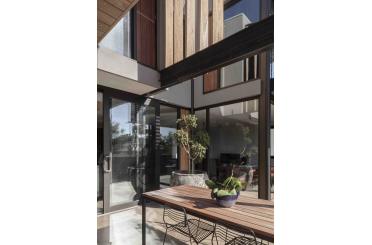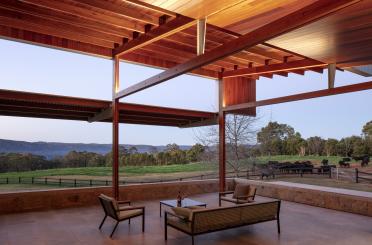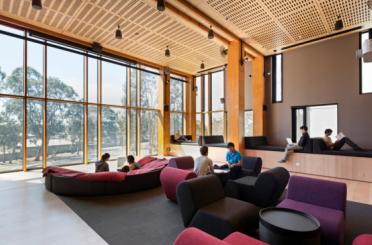35 Hanover Street
Oakleigh VIC 3166
Australia
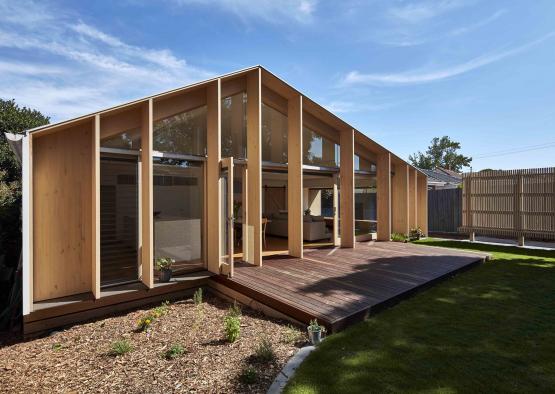
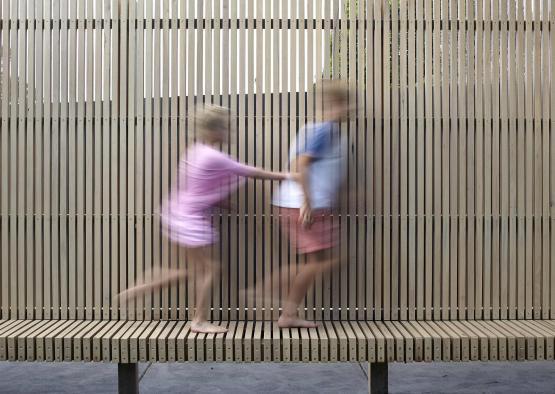
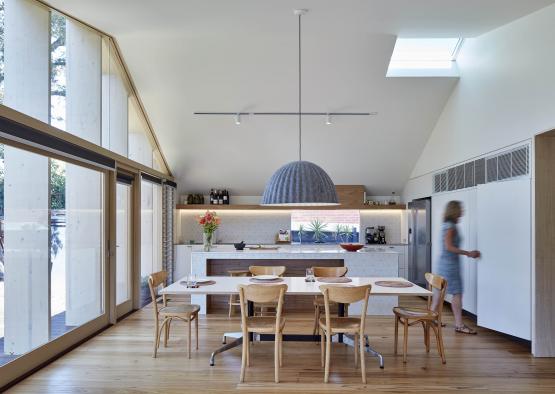
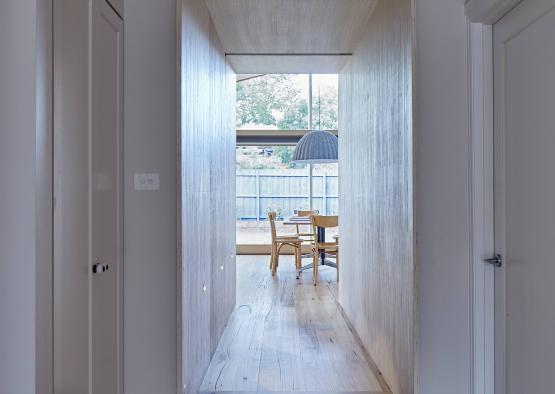
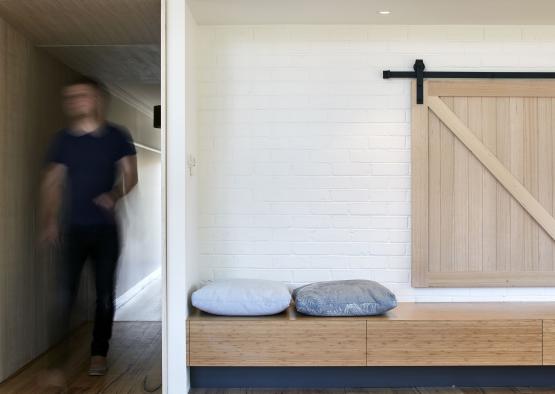
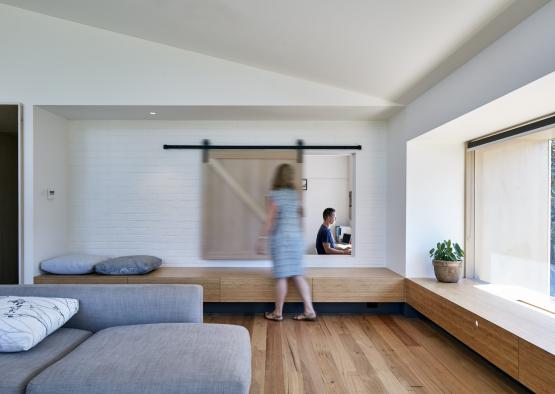
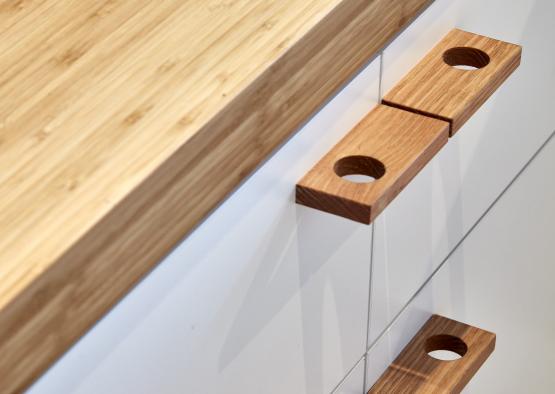
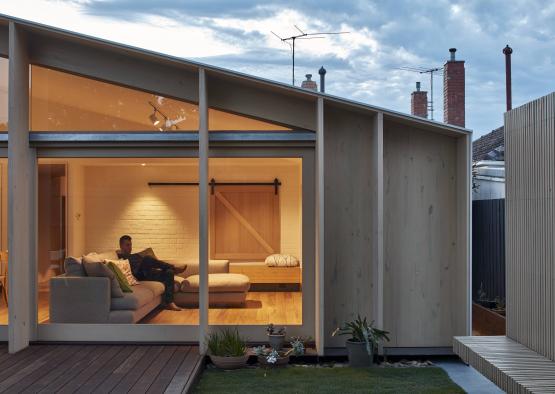
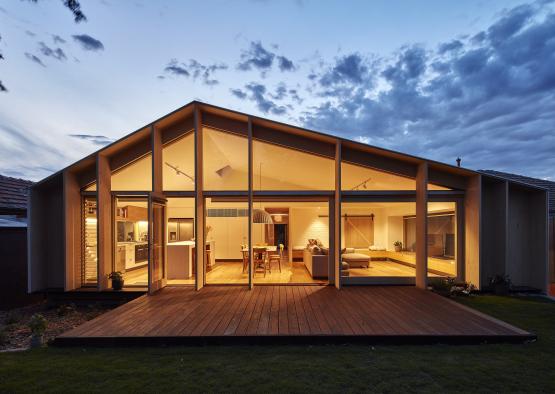
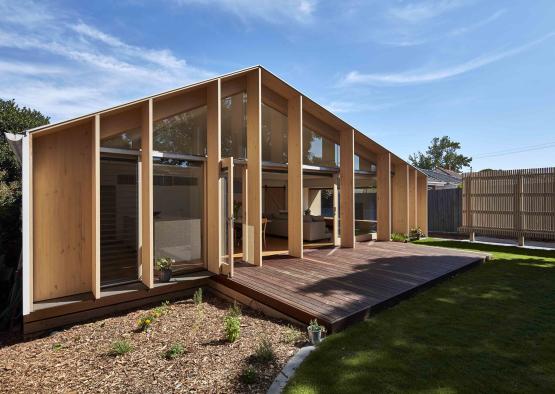
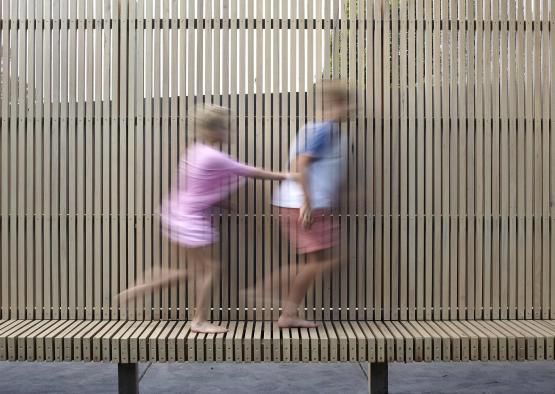
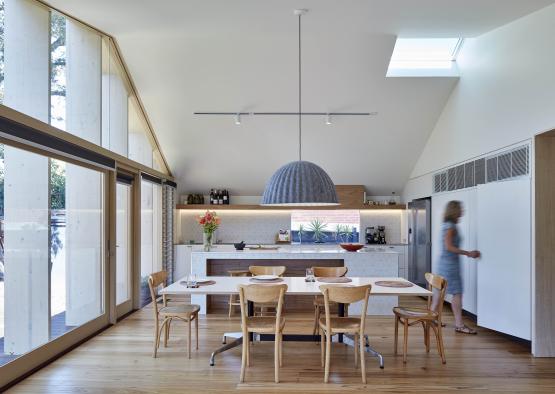
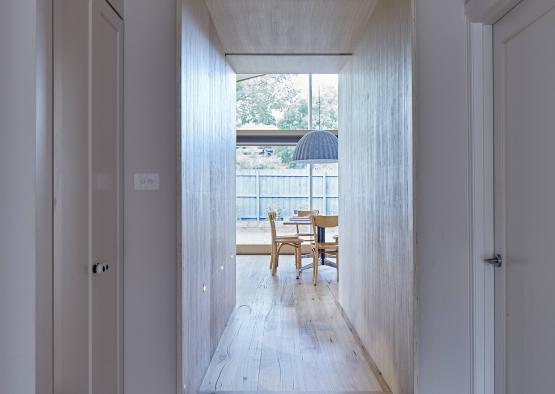
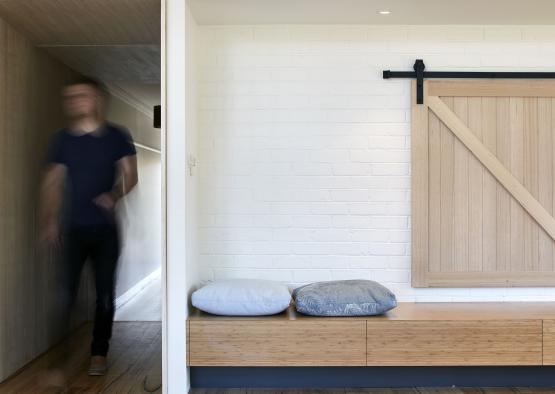
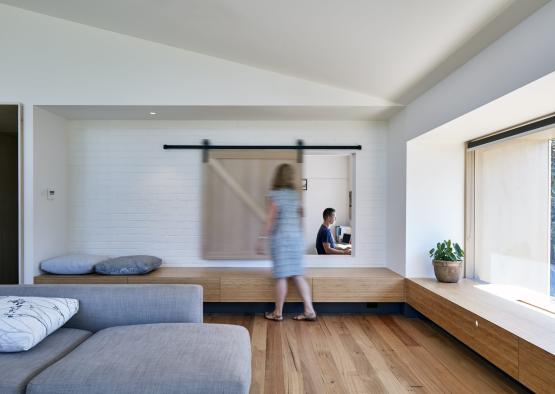
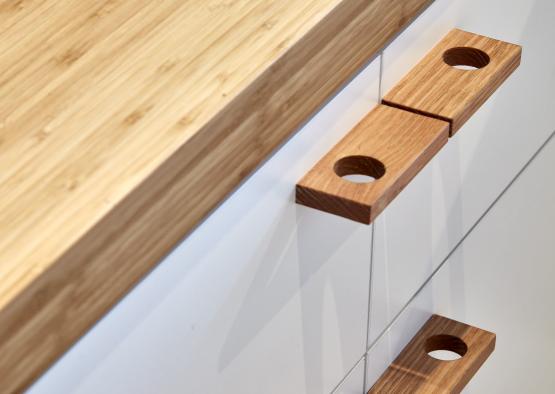
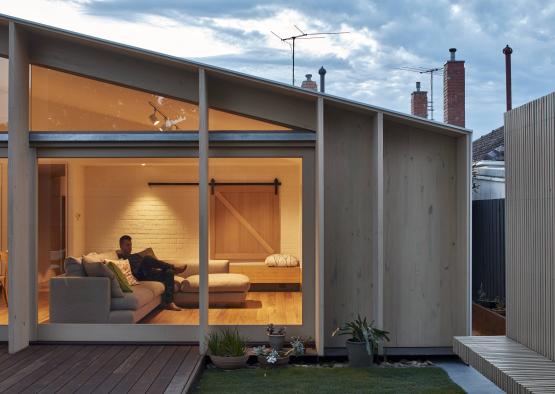
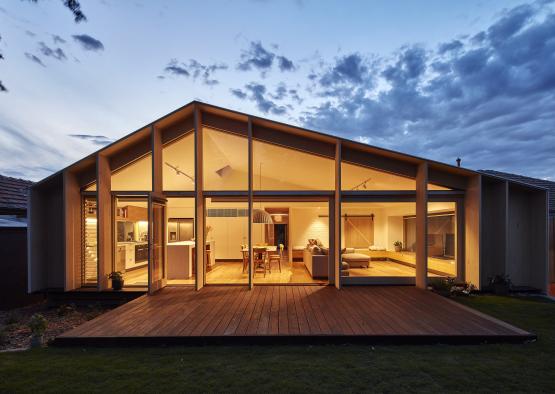
Overview
This project for alterations and additions to a detached 1960s suburban residence draws inspiration from the shape of lean-to structures prevalent at the rear of post war middle suburban houses.
The subsequent form is created using an innovative structural system of laminated pine blades that are placed on the outside of the building envelope to enable expansive glazed views to the rear garden. The blades are simultaneously used as primary structure, finished surface and sun shading. Minimal steel was required and the blade system was erected more quickly and substantially cheaper than if a conventional steel portal frame was used.
This project champions resource efficiency and easily meets 6 star certification. The pitched roof of the additions enable a compact volume that has 14% less exposed surface area than a comparable flat roof with the same average ceiling height, subsequently reducing both material use and on going resource consumption.
-37.9013981, 145.0917171
Structure
Kiln dried hardwood provided elegant and functional doors and windows that are sustainably sourced and have extremely low embodied energy (2.0MJ/kg) compared to PVC (8.0MJ/kg) or Aluminium (170.0MJ/kg). The doors include the top hung timber framed sliding doors to the rear garden with adjoining hinged timber door. Internally there is a solid Victorian Ash sliding panel to enable interconnectivity between the living room and study.
The use of Australian timber from certified plantations was important for the following reasons: products sourced with reliable quality; glue laminated timbers and LVLs make highly efficient use of plantation timber translating to both environmental, resource efficiency and a highly cost effective solution; the products come with reliably tested structural information enabling the selection of very fine members for both structural efficiency and aesthetic purposes; the glue laminated timber and LVLs can be used externally; and the glue laminated timber can be used as both a structural and finished product enabling resource and cost efficiency.
Exterior
The garden is framed by a timber battened screen and seat that also creates a segregated utility area. The East facing façade utilizes an innovative structural system of laminated pine blades that are placed on the outside of the building envelope, enabling expansive glazing to the rear garden. The stained blades are simultaneously structure, finished surface and sun shading. No additional lining, substrate or embellishment is required. Both the laminated timber blades and LVL framing used for the roof and floor structure are fabricated from certified Radiata pine plantations and make highly efficient use of timber. The timber blade system enables the internal envelope to follow the external envelope.
The subsequent cathedral ceiling captures heat at the apex of the ceiling, which forms a heat bank in winter. In summer, an automated double glazed argon filled skylight at the ceiling apex opens to release any trapped warm air and draws cross flow ventilation from the doors and louvred window at the base of the space.
Interior
The interior features a series of framed views out to the garden that are enhanced by the timber blades and surrounding plywood paneling, cabinetry and a solid timber sliding panel.

